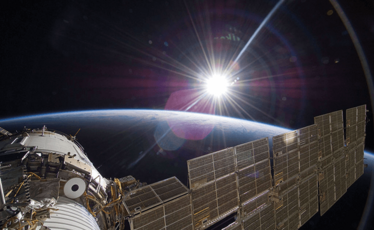The Final Frontier?
The Galactic Grant Competition encourages companies to use the International Space Station for pharmaceutical R&D
We’re used to hearing about national or regional attempts to bolster innovation, but how often do we see an initiative offering companies the chance to conduct research in space? And while we certainly aspired to pharmaceutical development and manufacturing on Mars in our very first cover feature in September, it was admittedly somewhat tongue-in-cheek...

Enter the boldly titled ‘Galactic Grant Competition’ – an initiative that stems from a partnership between the Center for the Advancement of Science in Space (CASIS) and the Massachusetts Life Sciences Center (MLSC). Sadly, only open to companies based in Massachusetts, the competition presents the opportunity to use the International Space Station (ISS) for research. According to CASIS, the microgravity environment on board the space station has “profound and unique effects on biological phenomena and can enable discoveries with terrestrial applications, including drug discovery, development, delivery and diagnostics.”
A number of pharma-related projects are already underway on the ISS. For example, Novartis sent mice to the station to study muscle atrophy caused by extended microgravity exposure from spaceflight, and the Veterans Affairs Medical Center is using a yeast-based system to study cancer drug mechanisms and side effects at the cellular level; the unique environment causes changes in the yeast’s metabolism compared with earth-based investigations.
Applications opened on December 1, 2014, and will run until April 3, 2015, and the winners will be announced on July 7, 2015, as part of the ISS Research & Development Conference.

Making great scientific magazines isn’t just about delivering knowledge and high quality content; it’s also about packaging these in the right words to ensure that someone is truly inspired by a topic. My passion is ensuring that our authors’ expertise is presented as a seamless and enjoyable reading experience, whether in print, in digital or on social media. I’ve spent fourteen years writing and editing features for scientific and manufacturing publications, and in making this content engaging and accessible without sacrificing its scientific integrity. There is nothing better than a magazine with great content that feels great to read.



















